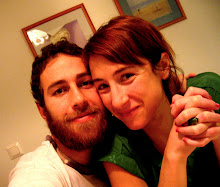
"Scottish Protestants were increasingly viewed as dangerous turncoats who sided with the English. In 1546 David Beaton imprisoned the Protestant preacher George Wishart (1513-1546) in the castle’s Sea Tower and had him burnt at the stake in front of the castle walls on March 1. Today, brick lettering with his initials marks the spot where he died. In May of that same year, Wishart's friends conspired against the cardinal. On May 26 they gained entry to the castle by disguising themselves as masons when some building work was in progress. After overcoming the garrison, they murdered Cardinal Beaton and hung his body from his window on the front of the castle. Following this murder, the Protestants took refuge in the castle and formed the first Protestant congregation in Scotland. A long siege was ordered by the Scottish Regent, Earl of Arran. In November of 1546 a mine was begun by the attackers which was successfully counter-mined by the defenders. Both the mine and counter-mine cut through solid rock. They were rediscovered in 1879 and remain open to the public today."
http://en.wikipedia.org/wiki/St_Andrews_Castle
The castle sort of descended into the coastline and the sand below it has all types of goodies - beach glass, shells, and smooth, sand-polished minerals. At night you can even see Scottish youth burning wheelbarrow tires in one of the many caves in the cliffs. That is like, so, totally not environmentally cool. St. Andrews was nice though.












After a week of network meetings and listening to some great talks, it was time to leave Fife. I had a little time to kill on Sunday so I caught a ride with my friend Dan to his place in Aberdeen. Aberdeen was a grey place. Oil town. But I took a long walk and saw seals swimming amongst the oil tankers in the harbor. He swam as I walked and we noticed each other. The air was crisp and cool, the gardens were full of flowers, and the birds were everywhere. The grass was cool and green and I took some photographs. Can you spot the seal?









 Dan fixed me a steak dinner and I caught the 9:30 train to Edinburgh. I got there at around midnight and basically barhopped until I could catch the shuttle to the airport at 5:00am. I managed to play a song at an open mic night at a bar next to a youth hostel. I followed the act of a creationist highlander in a leather Lucky Strike jacket (he sang Redemption Song, by Bob Marley, which I thoroughly enjoyed). The plane would leave at 10:00am, bound for Torino. Italy was beautiful. I attended the 2009 ESEB (European Society for Evolutionary Biology) Congress at the Politecnico in the middle of Turin, as basically an understudy of the Commissioning Editor of Biology at Oxford University Press. Ian was a great friend - generous and helpful. We had a fine time, had dinners with editors and publishers, and I was able to take time out when I needed to attend some important talks on various aspects of evolutionary biology, speciation in particular.
Dan fixed me a steak dinner and I caught the 9:30 train to Edinburgh. I got there at around midnight and basically barhopped until I could catch the shuttle to the airport at 5:00am. I managed to play a song at an open mic night at a bar next to a youth hostel. I followed the act of a creationist highlander in a leather Lucky Strike jacket (he sang Redemption Song, by Bob Marley, which I thoroughly enjoyed). The plane would leave at 10:00am, bound for Torino. Italy was beautiful. I attended the 2009 ESEB (European Society for Evolutionary Biology) Congress at the Politecnico in the middle of Turin, as basically an understudy of the Commissioning Editor of Biology at Oxford University Press. Ian was a great friend - generous and helpful. We had a fine time, had dinners with editors and publishers, and I was able to take time out when I needed to attend some important talks on various aspects of evolutionary biology, speciation in particular. 
























After the Congress was over, we spent one night in the old beautiful town of Bergamo, near Milan, whose ancient grounds became a Roman Municipality in 49 BC. Atilla and the Huns destroyed the ancient city of Bergomum in the 5th Century. The old city walls still stand, surrounding the "high" town, or Città Alta. We walked up into the old town, over and along the walls, through the narrow streets where plague had wiped out much of the city's population in the 1630s.

Back in Jyväskylä it is nice to be home. No rest though. I've began work on my second manuscript and have plenty of food on my plate. Time to start putting it away... Cheers and Love









